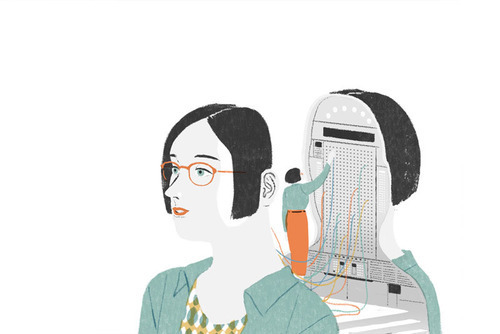Code Switching
 Take a moment to think about your behaviour styles throughout the day. Do your mannerisms and speech patterns and body language vary depending on who you're with and where you are-- at work, at school, alone, with your partner, with family, with a group of old friends? Most likely you do. If you speak more than one language, particularly if you live in a highly diverse area, or come from a different background than the dominant culture, you may also pick your language or dialect with care for different situations. You may even change your appearance by altering your clothes, hairstyle, or other personal adornment.
Take a moment to think about your behaviour styles throughout the day. Do your mannerisms and speech patterns and body language vary depending on who you're with and where you are-- at work, at school, alone, with your partner, with family, with a group of old friends? Most likely you do. If you speak more than one language, particularly if you live in a highly diverse area, or come from a different background than the dominant culture, you may also pick your language or dialect with care for different situations. You may even change your appearance by altering your clothes, hairstyle, or other personal adornment.The phenomenon of switching between modes of speech and non-verbal communication based on the social environment is known as 'code switching'. While the term was originally developed to describe the process of multilingual individuals changing languages depending on the setting and subject matter, it can be more broadly applied to all kinds of communication, including the messages we send with our physical appearance.
Weirdly, this doesn't seem to be addressed in Fictionland. While I can understand characters in an entirely novel situation (like the ubiquitous peasant who discovers their noble lineage and gets hauled into the aristocracy) might be totally lacking in a social script. But characters who have experience navigating between different subgroups will most likely have become skilled at code-switching, perhaps to the point where the two groups have fully accepted them. In fact, they may be seen as a particularly valuable vector for communication between groups, rather than an interloper. Incorporating a character's code-switching behaviour-- and their feelings about it-- in depth can be an interesting way to examine both the character's personality and individual identify and the relationship between different groups in your setting.
It's also important to note that all your characters will most likely code-switch, sometimes in more subtle ways, throughout your story. Someone's interaction with their children in terms of words and body language should be markedly different from their interaction with their best friend, which should be different from their interaction with a business rival. We all adapt to our ever-changing social environment, and so should your characters.
Published on March 21, 2014 02:36
No comments have been added yet.



